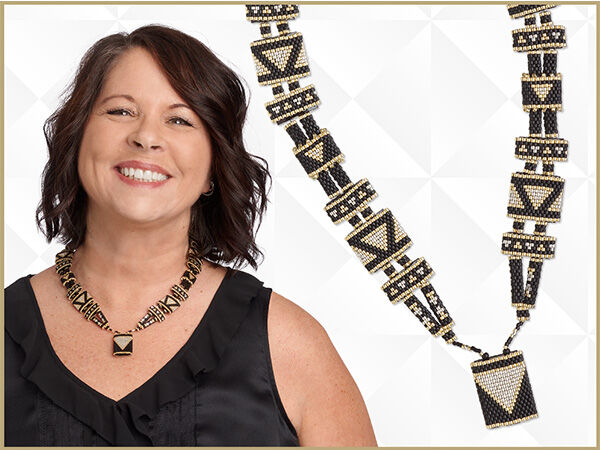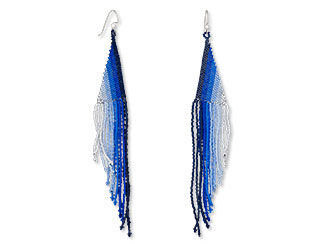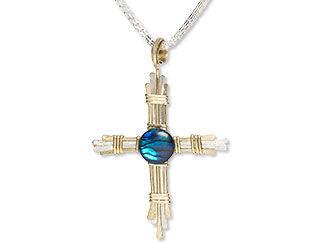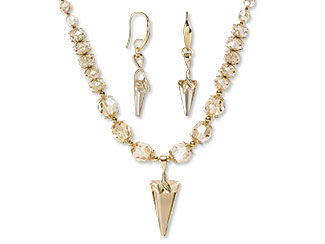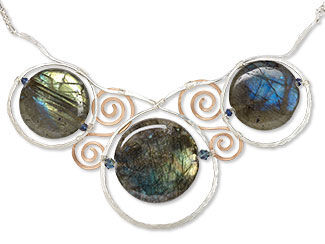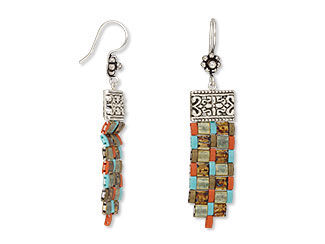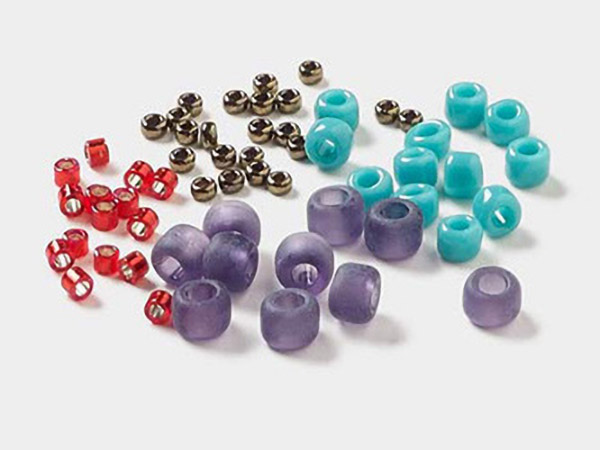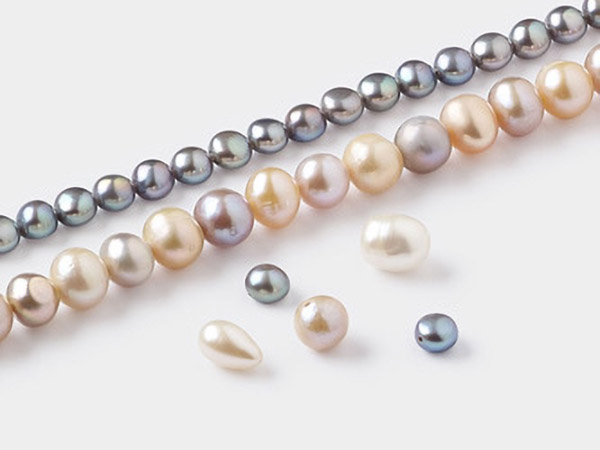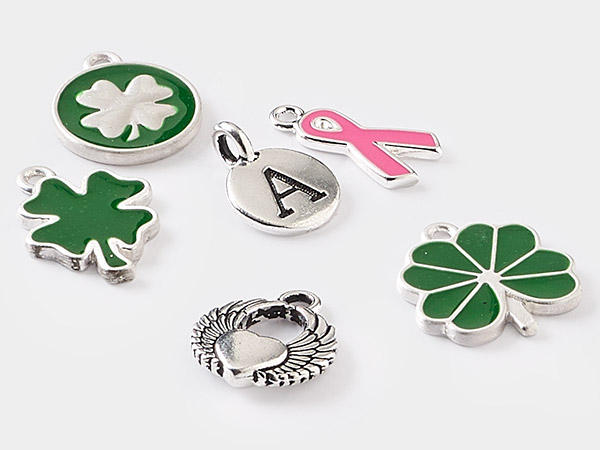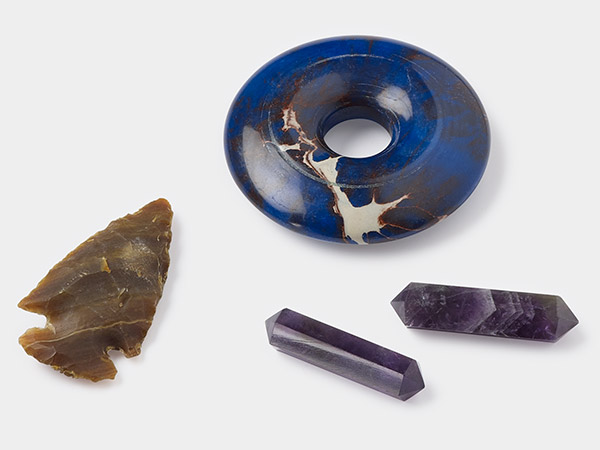Shape Symbolism in Jewelry
Drawing inspiration from our childhood toys and lessons, we understand that fundamental shapes serve as the foundational building blocks for design. But simple shapes transcend mere physical elements in art. They represent profound concepts and carry symbolic meanings. As a designer, you have the power to give your jewelry a narrative that is both rich in meaning and steeped in lore.
Straight Lines
Symbolism: Solid, dependable, logical, predictable and understandable.
Though not classified as a polygon, a line is a fundamental design element. In the realm of jewelry, what elevates the straight line from redundancy is the interplay of color, width, texture and quantity. A line may manifest as solid or broken, and it can also be subtly suggested by other elements within your design. The orientation of a line can evoke varied emotions. A straight horizontal line may imply the calmness of a serene body of water, while a vertical line commands attention. Diagonal lines, on the other hand, infuse a sense of motion and power.
Composed of multiple parallel lines, fringe symbolizes individuality within unity, freedom, celebration and cultural identity. Fringe is line in motion, creating a fluidity akin to the movement of the sea.
Conjuring a feminine aesthetic, the gracefully rounded shapes of curved lines suggest not only harmony and flexibility but also an inherent elegance.
Cross
Symbolism: Christianity, salvation, balance, protection, completeness
The cross is widely recognized as a symbol of Christianity, embodying themes of salvation, healing, faith, hope and sacrifice. Its historical uses include references to the four cardinal directions—north, south, east and west—or the four ancient elements—earth, water, air and fire. Variants like the Egyptian ankh and the swastika, an ancient Hindu symbol of good luck and life, take on cross-like forms. Additionally, the cross is regarded in certain cultures as a protective emblem, believed to ward off evil and invoke blessings.
Triangle
Symbolism: Balance, stability, change, gender, triads
Due to their inherent structural stability, triangles symbolize balance and steadiness. Furthermore, the triangular Greek letter delta (D) implies a sense of transformation or transition. The orientation of a triangle plays a pivotal role in its symbolic connotation— pointing upward, it signifies masculinity, while pointing downward, it conveys femininity. Moreover, triangles represent various triads, encompassing concepts like past-present- future, mind-body-spirit and the Christian Trinity.
In the realm of jewelry crafting, the triangle takes on diverse forms, from the sleek geometry of a spike to the graceful contour of a cone. Notably, the Christmas Tree stands as one of the most iconic representations of this geometric shape.
Circle
Symbolism: wholeness, completion, infinity, protection, community
The seamless form of a circle serves as a symbol of unity, wholeness, completion and harmony. Its lack of an endpoint conveys the concept of infinity, making it a fitting motif for jewelry with themes of enduring love. Across diverse cultures, the circle represents community and equality, embodying a sense of protection and inclusivity.
The circle stands as a cornerstone in jewelry design, with necklaces and bracelets inherently adopting its form. This fundamental shape extends to other jewelry components, including jump rings, round pendants, hoop earrings and other elements.
Jump rings and Oh! Ring™ rubber components can be combined to create a torus, a 3D rendition of a circle resembling a doughnut.
A well-known example of a torus is a wreath. Additional three-dimensional representations of a circle include balls, spheres and ovals. In jewelry making, these take the forms of beads, pearls, gemstones and more
A spiral captivates with its intricate, undulating progression. Symbolically rich, it embodies notions of creativity, growth, evolution, mystery, fertility and depth. The spiral is a popular motif for jewelry
Square and Rectangle
Symbolism: order, boundaries, security, tradition, justice
Because of the inherent stability of ninety-degree angles so prevalent in manmade structures, squares and rectangles represent protection and boundaries. These structured forms also evoke notions of unwavering justice and tradition.
These design concepts creatively incorporate squares and rectangles, infusing vibrant colors and imaginative arrangements to enhance the overall conceptual depth.
However you choose to leverage symbolism, it can influence your selection of fundamental shapes in jewelry designs, imbuing them with deeper meaning and weaving an intriguing narrative about you and your creative process.
Shop for Your Materials Here:
Have a question regarding this project? Email Customer Service.
Copyright Permissions
All works of authorship (articles, videos, tutorials and other creative works) are from the Fire Mountain Gems and Beads® Collection, and permission to copy is granted for non-commercial educational purposes only. All other reproduction requires written permission. For more information, please email copyrightpermission@firemtn.com.
